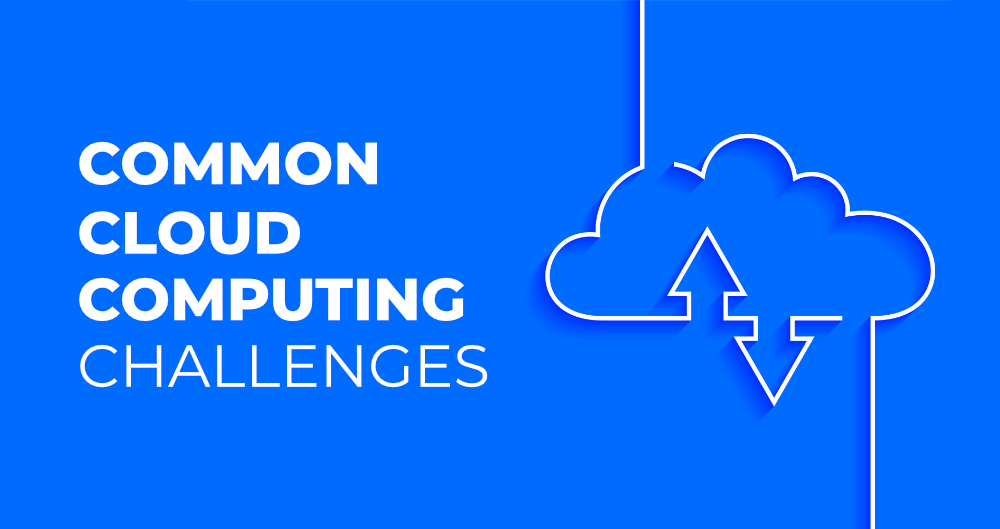
Cloud computing has revolutionized the IT industry by providing real-time, on-demand resources like data and storage. Its market valuation is rapidly growing, and it offers benefits to both large enterprises and small-scale businesses by cutting costs. In fact, it is estimated that over 94% of businesses will increase their spending on the cloud by more than 45%. This surge in cloud development has also created high-paying jobs for cloud developers[^1^].
The COVID-19 pandemic further accelerated the growth of cloud technology. With classes shifting online, virtual office meetings becoming the norm, and virtual conferences and streaming platforms gaining popularity, we heavily rely on cloud computing for our day-to-day activities. However, with this reliance comes a need to address the challenges that arise with cloud computing. In this article, we will explore the most common challenges faced when dealing with cloud computing.
Data Security and Privacy
Data security is a major concern when transitioning to cloud computing. While cloud service providers may assure data integrity, it is the responsibility of users and organizations to carry out authentication, authorization, identity management, data encryption, and access control. Security issues such as data breaches, identity theft, and malware infections can erode the trust of users, leading to potential revenue loss and damage to reputation. Additionally, the high-speed transmission of large amounts of data in cloud computing makes it susceptible to data leaks[^1^].
Cost Management
Although most cloud service providers offer a “Pay As You Go” model to reduce costs, enterprises can still incur significant expenses when there is under-optimization of resources or sudden spikes in usage. Unused resources and instances left running when not in use can also contribute to increased costs. It is essential for organizations to effectively manage and optimize their cloud resources to avoid unnecessary expenses[^1^].
Multi-Cloud Environments
Many companies now rely on multiple cloud service providers, often using hybrid cloud tactics. This dependence on multiple clouds can create complexities and challenges for infrastructure management. The differences between various cloud providers make it difficult for IT teams to manage and integrate these environments efficiently[^1^].
Performance Challenges
Performance is crucial when considering cloud-based solutions. Even minor latency issues while loading apps or web pages can result in a significant drop in user engagement and profits. Inefficient load balancing, where servers fail to efficiently distribute incoming traffic, can contribute to latency issues. Fault tolerance, ensuring operations continue even when components fail, is another performance challenge that needs to be addressed[^1^].
Interoperability and Flexibility
Switching from one cloud service provider to another can be a complicated process. Applications written for one cloud may require rewriting when migrating to another, leading to a lack of flexibility. Challenges also arise in handling data movement, setting up security protocols, and configuring networks when switching cloud solutions. These complexities can hinder the ability to quickly and seamlessly transition between cloud providers[^1^].
High Dependence on Network
Cloud computing relies on high-speed network connectivity to facilitate real-time provisioning of resources. However, this dependence on the network can pose challenges. Limited bandwidth or network outages can disrupt cloud operations and potentially result in business losses. Smaller enterprises, in particular, struggle with maintaining high-network bandwidth due to associated costs[^1^].
Lack of Knowledge and Expertise
Cloud computing is a complex field that requires extensive knowledge and expertise. While there is high demand for professionals in this field, there is also a shortage of skilled cloud engineers and developers. Constant upskilling is necessary to understand, manage, and develop cloud-based applications effectively. Professionals must stay updated with the latest advancements and best practices in cloud computing[^1^].
In conclusion, cloud computing offers immense opportunities and benefits, but it also presents several challenges that need to be addressed. From data security and cost management to performance issues and interoperability complexities, organizations must overcome these challenges to fully leverage the power of the cloud. By staying informed and continuously upskilling, cloud professionals can navigate these challenges and contribute to the growth and success of cloud-based technologies[^1^].
FAQs
Q: What are the challenges of cloud computing?
A: The most common challenges in cloud computing include data security and privacy, cost management, managing multi-cloud environments, performance issues, interoperability and flexibility, high dependence on the network, and the lack of knowledge and expertise[^1^].
Q: How can organizations address these challenges?
A: Organizations can address cloud computing challenges by implementing robust security measures, optimizing resource usage to manage costs, developing strategies for managing multi-cloud environments, prioritizing performance optimization, exploring interoperability solutions, ensuring reliable network connectivity, and investing in continuous learning and upskilling[^1^].
Q: Why is data security a concern in cloud computing?
A: Data security is a concern in cloud computing because user and organizational data stored in the cloud is critical and private. While cloud service providers offer data integrity assurances, it is the responsibility of users and organizations to implement measures such as data encryption, access control, user authentication, and identity management to protect sensitive information[^1^].
Q: What is the impact of performance challenges in cloud computing?
A: Performance challenges in cloud computing can lead to decreased user engagement, lower profits, and a negative user experience. Latency issues, inefficient load balancing, and inadequate fault tolerance can all contribute to performance degradation. Organizations must prioritize performance optimization to ensure a seamless and efficient user experience[^1^].
Conclusion
Cloud computing has revolutionized the IT industry, offering on-demand resources and cost-cutting benefits. However, it is essential to recognize and address the challenges that come with cloud computing. By understanding and overcoming these challenges, organizations can harness the full potential of the cloud for their business success. This requires a proactive approach to security, cost management, performance optimization, and continuous learning in the ever-evolving field of cloud computing[^1^].


